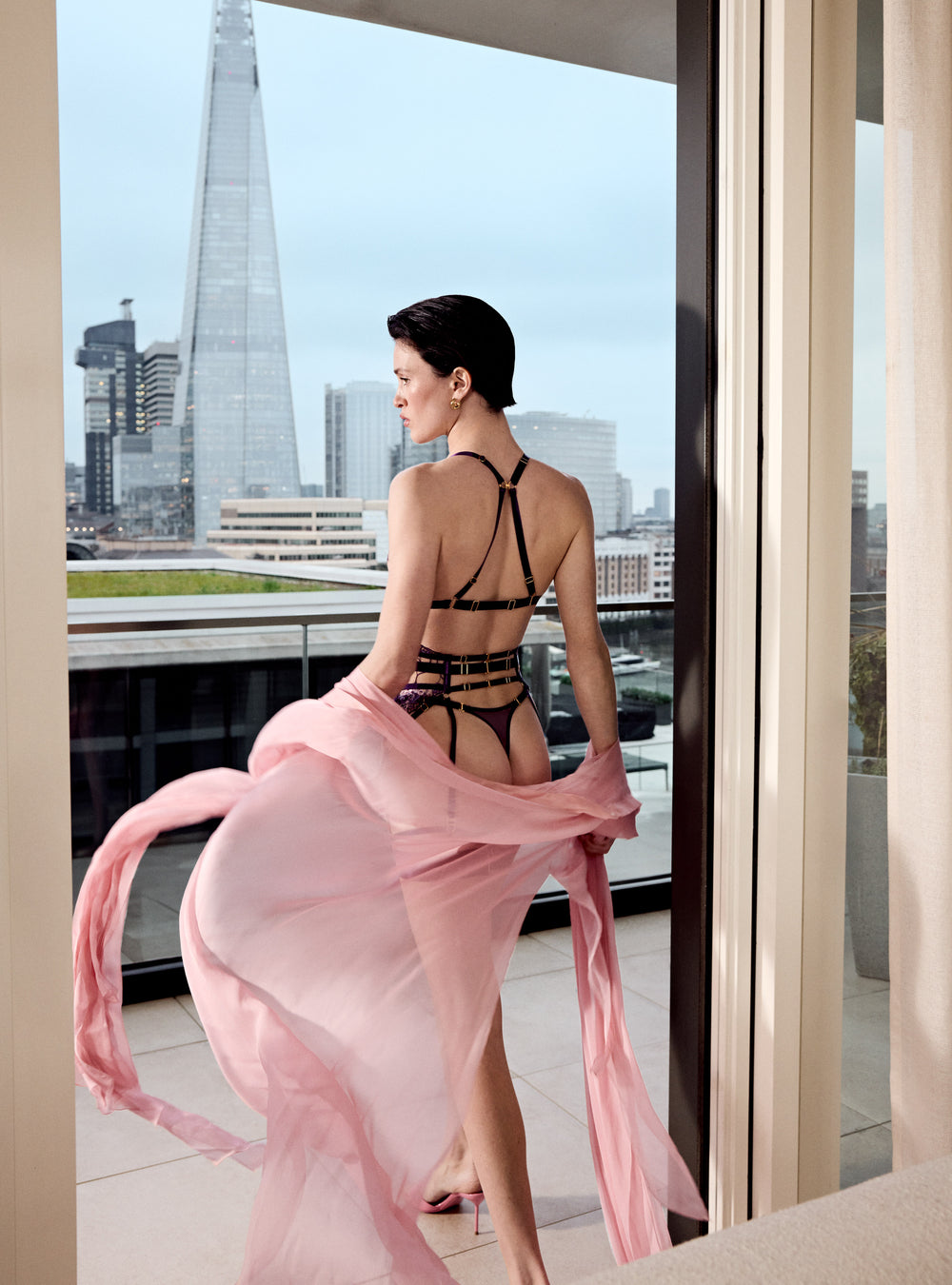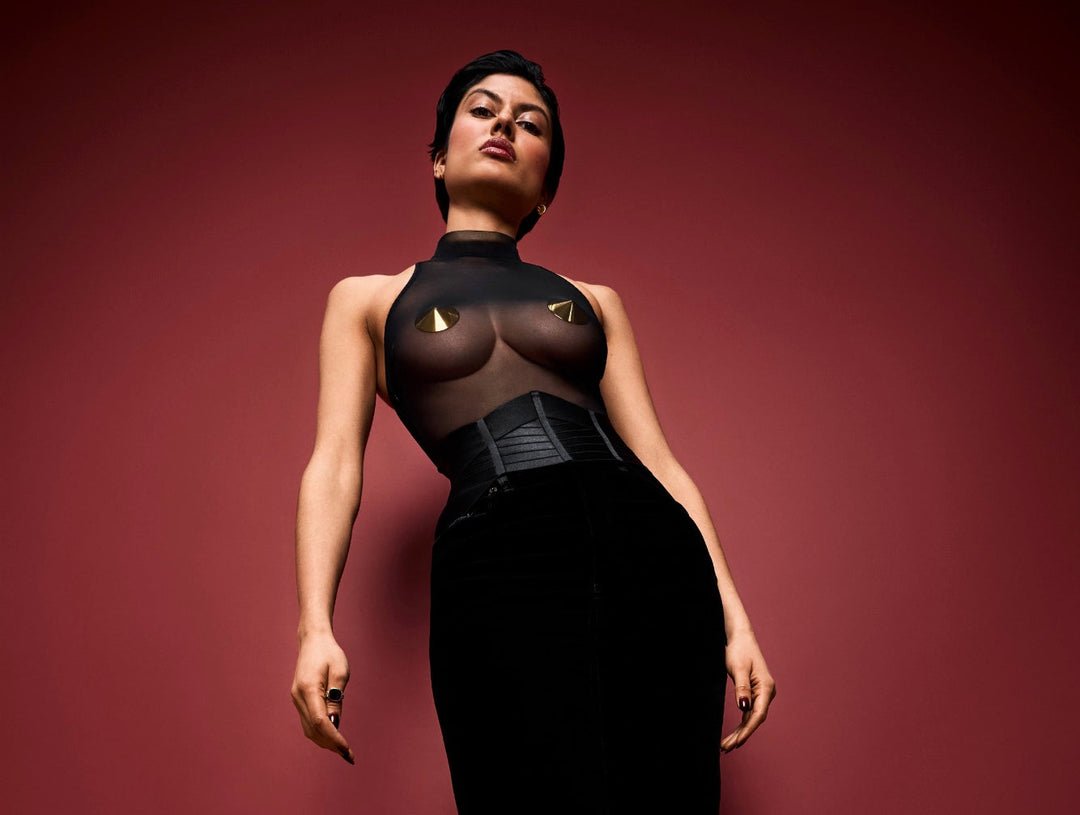Introduction to Silk
It has been said that the sensation of silk against your skin is as close to heaven as one can get. From my pseudonym, it won’t surprise you that I agree! Let’s get to know this luxurious fabric more intimately.
To begin, we delve into Chinese legend...
Empress Leizu (who came from the humble beginnings of being a farmers daughter) was taking afternoon tea under the shade of the mulberry tree in the garden one day, when a silk cocoon dropped from the tree above and fell into her hot tea. When submerged, she noticed the cocoon growing softer and beginning to loosen. With the help of her maid, they unravelled the single thread of silk that made up the cocoon until it stretched the length of the palace garden.
Empress Leizu is also credited with inventing both the silk reel and the first silk loom, before spreading the technology of sericulture across China to help grow their economy. Leizu was a smart Empress indeed, as silk production quickly yielded the lion’s share of China’s wealth. As such, the penalty for attempting to smuggle silkworms and even speaking of the process of sericulture to outsiders was punishable by death. China managed to maintain a monopoly of silk production for over a thousand years (the imperial ban was broken due to a princess who, set to be married off, refused to leave without access to her favourite fabric), and enjoyed the vast economic success this brought them. You may have heard of “The Silk Road” as playing a major role in our world’s trading history and its name certainly speaks to the popularity of the fabric. In fact, this was the reason Rome’s Senate repeatedly tried to ban silk. The Roman’s were spending so much money on it, the amount of wealth leaving Rome was causing trade imbalances. The Senate also deemed silk to be “inadequately modest” due to its light and sometimes sheer nature. Their repeated attempts failed however, and if you’ve felt the fabric, well, you know why those Romans refused to relinquish it.
Silk is a natural protein fibre that can be produced by several insects as a cocoon and nest material. The most common type of silk is produced by domesticated silkworms, but bees, wasps, ants, leafhoppers, beetles, and spiders also are able to produce this fibre. In 2012 the Victoria & Albert museum displayed a cape purely made from the silk of Golden Orb Weaver Spiders. The spiders were not harmed and only borrowed for a day at a time. The shade you see below is the breathtaking natural colour of that species’ silk.
One Bombyx Mori moth can produce 300-500 eggs at any one time, which hatch to form silkworms (“caterpillar” would be a more descriptive term). They gorge themselves on mulberry leaves, and then spin cocoons using a single thread averaging about 915 metres (1,000 yards) long. To make a single kilogram of silk, around 6,000 cocoons are needed. In most silk production, the worms are killed in order for the single strand to remain unbroken. However, there are some production houses that offer a vegan-friendly Peace Silk, where the worms are allowed to gnaw their way out and continue their life cycle as moths. You can read more about peace silk here in my review of Studio Pia’s Soraya robe.
Silk has been used in everything from parachutes, bicycle tires, surgical sutures (being hypoallergenic, silk does not elicit an autoimmune response), paper, fishing line, bedding, pantyhose, clothing, and of course, lingerie.
It is a prized choice for lingerie since it is luxuriously sensual, drapes beautifully, feels marvellous against the skin, as well as being lightweight, breathable, and moisture-wicking. As mentioned above, it’s also hypoallergenic, so it’s a great choice for sensitive skin and those who are allergy prone.
While silk is naturally a strong and durable fabric, it’s hand (softness) and lustre is delicate, especially when woven as a satin weave* and in the lighter weights. 19 is the usual momme weight for lingerie, although some lines do offer a 22 and 25 weight. These can prove more durable since they have a thicker weave but come with a much higher price tag (often double or triple the cost of 19mme). If you want to take care of your pieces, my washing guide may be of interest. Silk requires special care to keep it looking its best, but is much easier to care for than most realise. I know the supposed high upkeep held me back from investing for quite a while, but now my closet is full of silk - my only regret is not learning how easy it was to care for sooner!
*Satin vs Silk - a common misconception.
Satin is often used as a synonym for silk by the wider public, but it is actually a type of fabric weave that refers to a shiny and slippery sheen on one side. It achieves this by using a jumping weft which allows the fibres to reflect the light much more. The downside to this is that a jumping weft causes the weave to lack stability when compared to a plain weft (think crosshatches), so even though silk is a very strong fibre, when woven to maximize hand and lustre, it becomes vulnerable.
Polyester is often made with a satin weave as an alternative for a silk-look at a lower price point, and frequently is bought with the purchaser believing it to be silk. If you’ve ever experienced this, you’ll know the look is where the similarities end. Due to the synthetic non-breathable nature of Polyester, I cannot recommend it as an alternative. I find it sweaty and often uncomfortable to wear. Real silk is always worth saving up for, at least in my humble opinion.
I hope this has been a fun and informative romp through my favourite fabric.
I love learning the history behind an object as I tend to appreciate it so much more. Next time you’re wearing something silky, you can marvel at just how long that garment’s journey has been to grace your skin. It’s amazing that one disrupted afternoon tea nearly five thousand years ago could have such a ripple effect, one that we are still greatly enjoying the benefits of today.
@Silk.Sheets.Lingerie.Peeks is a Lingerie Blogger from New Zealand. She enjoys a good cup of tea, long walks on the beach, and rolling around on her large hoard of lingerie like a silk-obsessed Smaug.








